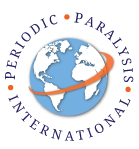Hospital Management Guidelines for Patients with Andersen-Tawil Syndrome
Patient’s Name: ___________________________________________________
Birthdate: ______________________Height: _____________Weight: _____________
Address: _____________________________________________________________
______________________________________________________________________
Primary Physician: ___________________________________________________
Physician Phone: ___________________________ FAX:__________________________
Emergency contact: Name ___________________________________________ Relationship: ________________________________________________________
home phone# ___________________cell # _____________________________
PRECAUTIONS: Place patient in coma position to avoid aspiration during weakness/paralytic attack. Weakness can rapidly progress to paralysis, torsades de pointes, cardiac arrest and respiratory failure, monitor the patient closely. Paralyzed patients may appear to be unconscious, but are awake and aware. Do not assume they cannot feel pain or hear conversations.
COMMUNICATION: If the patient is unable to speak and can blink ask yes or no questions, say, “Blink once for yes, twice for no.”
Normal BP: ________Normal heart rate:_______
Common symptoms during attacks;
Age at onset of symptoms;
Frequency of attacks;
Genetic mutation if known;
Family history?
Other Diagnoses:
Dietary Requirements: Low carbohydrate (under ___ grams daily), high protein, low sodium diet.
POTASSIUM LEVELS: ATS Patient’s K+ may be normal during attacks, or may fluctuate in either direction, even in the same patient. Monitor K+. Normal range of K+ when asymptomatic: Target range of K+:
MEDICATIONS: Including dosages and timing of doses
MEDICATIONS TO AVOID: Epinephrine, drugs which reduce serum K+. Antibiotics which reduce neuromuscular transmission or prolong QT interval: aminoglycosides: Strepto-, Neo-, Kana-, and Clindamycin Macrolides: Erythromycin, Telithromycin, Azithromycin; Fluoroquinolones: Ciprofloxacin and others
Food and Drug Allergies: a)
b)
c)
d)
CARDIAC INVOLVEMENT: Monitor cardiac activity and respiration.
IV USE: for maintenance when potassium is not the primary issue: Avoid IV use if sufficient fluids, medication and K+ levels can be maintained orally. Avoid glucose use dilute saline.
GENERAL ANESTHETICS: RISK of MALIGNANT HYPERTHERMIA: Patients with Periodic Paralysis are more than usually susceptible to malignant hyperthermia. Avoid the use of all halogenated ethers (isoflurane, ethrane, sevoflurane, and desflurane) as well as halothane (which is an alkane) and Suxamethonium chloride (INN), aka suxamethonium or succinylcholine. All are potential triggers of MH.
a) patients with any form of Periodic Paralysis often take longer to come out of anesthesia and may experience post-anesthetic paralysis and an extended period of post-anesthetic weakness.
b) While there is no standard protocol for anesthetic use in ATS, the following have worked for some patients: Propofol, Fetanyl, Versed – Rocuronium, Toradol.
LOCAL ANESTHETICS: USE NO EPINEPHRINE Lidocaine works inconsistently in many PP patients, and not at all in some patients. If lidocaine does not work use an alternative such as articaine, bupivacaine or mepivicaine without epi. In children the injection site may be numbed with Emla Cream to reduce syncopal response to injection.
OPERATING ROOM: TEMPERATURE CONTROL: Chilling is a primary trigger in all forms of periodic paralysis. Patient should be kept warm during procedures, but both chilling and overheating are attack triggers in many patients. Use of warmed solutions and body “huggers” are recommended.
MOVEMENT: a) If feasible arrange for breaks from electronic monitoring (or other items that inhibit movement) periodically to enable patient to move around to lessen and/or prevent attacks. b) If confined to bed periodically encourage as much movement of limbs as possible from bed to mitigate/recover from weakness, and prevent embolus.
Physician’s List: (Include any that apply with contact information)
Pharmacy:
phone: FAX:
Notes:
